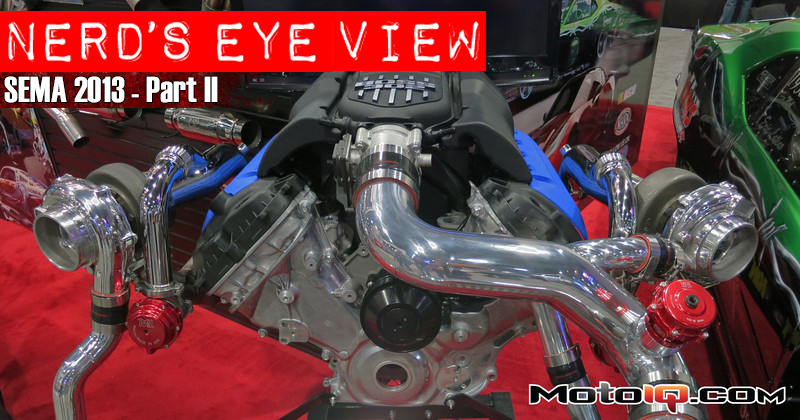,

A bit more modern of an inline-6 engine is the BMW N54. CP-E has released a twin-turbo upgrade system consisting of just about everything new. New manifolds hold a pair of Garrett based turbos using TiAL turbine housings. Again, good placement of the TiAL wastegates along with good merge angles are used. Yup, more exhaust bellows.

CP-E released an intercooler upgrade for the Focus ST too. A very important feature which you usually cannot see is the air diverter inside the end tank. This helps to more evenly distribute the airflow across the core of the intercooler to maximize cooling efficiency.
 |  |
CP-E also makes this new intake manifold for the Mustang GT. Those trumpets at the ends of the runners are definitely not easy to cast!

That’s right, I need two of the big ones! Yup, two of these Mercury Racing 9.0L V8 engines go in the boat.

What does it take to make 1350hp at 6000rpm? A pair of turbos, the big ones. They look to be around GT42 size. That’s about 1180 lb-ft of torque at 6000rpm. So you might be sitting there thinking, “It’s easy making 1350hp from a 9.0L! I’ve seen engines half that size using GT35 size turbos make that much power!” While you would be correct, try making that power for a constant hour or two with the smaller engines and see what happens. The engines used in boats often spend long periods of time at or near full power. Look closely at the turbine housings for the turbos; yes, they are water-cooled! If they weren’t, they’d probably melt or something due to the constant power demands. The turbos probably don’t get much cooling air flowing over them sitting in the hulls of the boats either whereas turbos on cars generally get some airflow through the engine bay. The water cooling of the turbine housings probably helps extend the life of those electronic wastegate actuators bolted to the housings too. The big turbos are used for maximum volumetric efficiency (reduced backpressure) and reduced stress on the engine. The payoff is a 20%-30% increase in fuel economy versus older engines. Those of you with boats know that is a huge savings in fuel costs.



